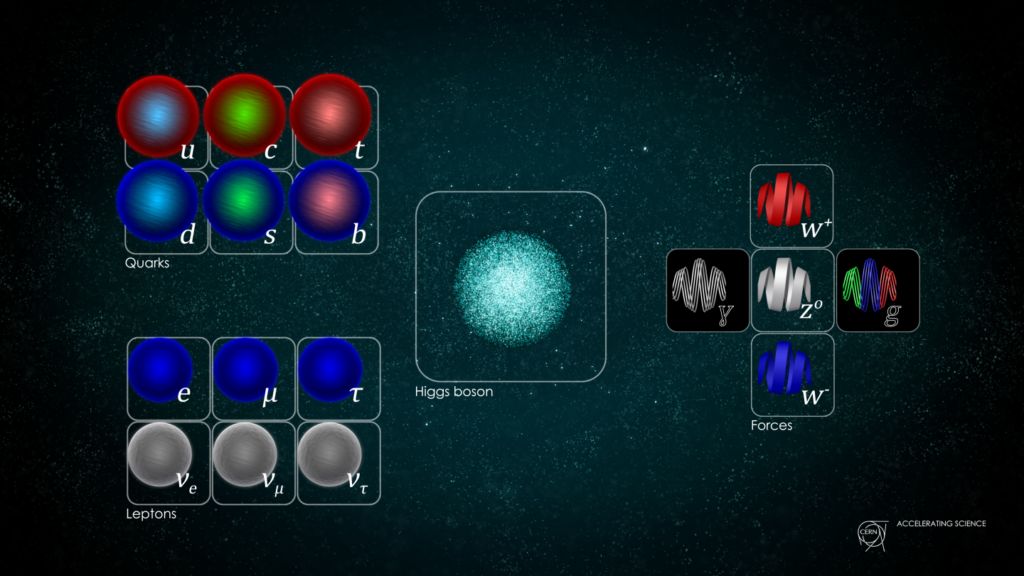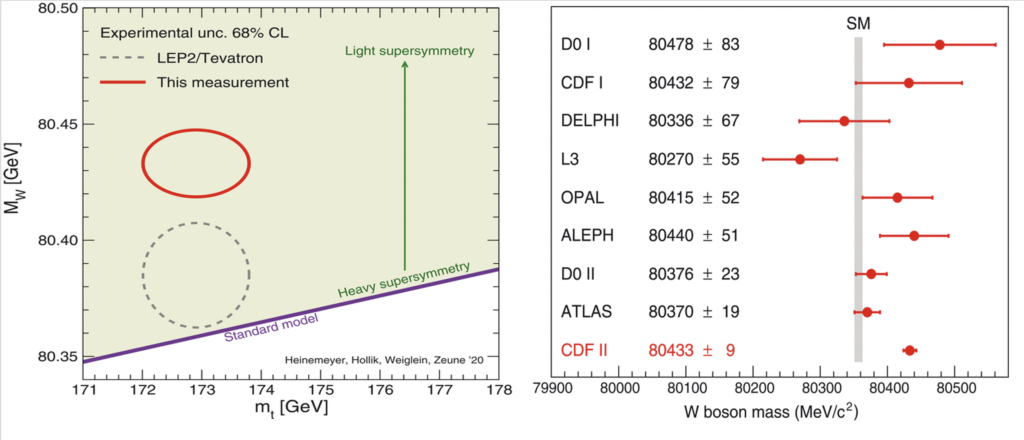New Boson Measurements Shed Light on Physics of the Universe
I remember sitting in a crowded room of scientists back in February 2003. The Wilkinson Microwave Anisotropy Probe (WMAP) had launched a couple of years earlier and the science teams were now ready to announce the results from 12 months of observing the cosmic microwave background (CMB) radiation. Tension and anticipation filled the room as the presenter started describing the first results. Would the WMAP upend our current understanding of the universe? Would new results solve problems or present new ones? But as the lecturer described how WMAP largely confirmed our current understanding of the universe—big bang cosmology preceded by an epoch of inflation that seeded galaxies—that tension and anticipation dissipated. All the results from WMAP fit nicely within this cosmological picture—one that’s consistent with RTB’s creation model.
The scientists in the room enjoyed the confirmation that we actually seemed to understand the universe’s formation and composition, but they also wanted some new problems to solve. Although the WMAP data of the day failed to illuminate any new problems, precision measurements of a subatomic particle called the W boson might.
The Standard Model Overview
The standard model of particle physics (or standard model) largely undergirds much of the precision and success of big bang cosmology. In brief, the standard model posits that all the stuff of the universe is comprised of a small group of fundamental particles governed by the four fundamental forces. The group of fundamental particles includes six quarks (up, down, charm, strange, bottom, top), six leptons (electron, muon, tauon, and their associated neutrinos), four force-mediating particles, and the Higgs boson.

Credit: Daniel Dominguez/CERN
All normal matter is built from the quarks and leptons, given mass by the Higgs boson, and interacts through the four fundamental forces—electromagnetic, weak nuclear, strong nuclear, and gravitational force. The particles on the right of the diagram (the photon, W+, W–, Z0, and gluons) mediate three of these fundamental forces. The electromagnetic interaction exchanges photons between particles. Gluon exchange governs the strong nuclear force and the W and Z bosons mediate the weak nuclear force.
All that the standard model seeks to explain, it does so with amazing completeness and precision. It may seem like physicists invented the standard model to explain all the particles above. However, the standard model was developed before scientists had found the charm and top quarks, the Higgs boson, gluons, and the W and Z bosons. In fact, the standard model makes predictions about the existence of each of these particles as well as their properties. Each of those predictions matches our best understanding of the measured values.
Moving beyond the Standard Model
Despite the success of the standard model, scientists know it is incomplete. The standard model offers no explanation for dark matter, or why the expansion of the universe started accelerating, or why the universe contains predominantly matter instead of an equal mix of matter and antimatter. Consequently, scientists search vigorously for signs of how to move beyond the standard model. As Mike Strauss and I discussed in a Stars, Cells, and God podcast, detailed studies of the Higgs boson (mass, number, and other characteristics) provide one avenue in this search. Precisely measuring the W boson mass provides another. However, while studies of the Higgs have found nothing unexpected, recent measurements of the W boson might have revealed some clues.
The CDF-II detector at the Fermilab Tevatron gathered data from proton-antiproton collisions. Using this data, the CDF team determined a mass for the W boson of 80,433.5 +/- 9.6 MeV/c2.1 Two aspects of this measurement warrant mention. First, it represents an amazing technological accomplishment to measure the mass of a particle that decays in an infinitesimal fraction of a second (the half-life of a W boson is 10-25 seconds) to one part in 10,000! Second, the mass found by the CDF team differs significantly from the calculated value based on the standard model, as shown in the image below.

Cautious Optimism
The CDF team invested considerable effort to ensure the validity of the measurement and confirmed that their measurement of the Z boson mass (a sister of the W boson) matches the predicted value from the standard model. Future measurements by the European Council for Nuclear Research (CERN) or others will hopefully provide confirmation of the larger mass, but it will take many years for those results. In the meantime, the unexpected result gives a big clue of how physicists could expand the standard model to explain the new W boson mass measurement. Finding ways to do so that remain consistent with all the experimental results will be challenging but may lead to better explanations of dark matter, dark energy, and the lack of antimatter in our universe. Better understanding of the universe’s composition helps inform big bang cosmological models.
Check out more from Reasons to Believe @Reasons.org
Endnotes
1. CDF Collaboration, “High-Precision Measurement of the W Boson Mass with the CDF II Detector,” Science 376, no. 6589 (April 7, 2022): 170–76, doi:10.1126/science.abk1781.





